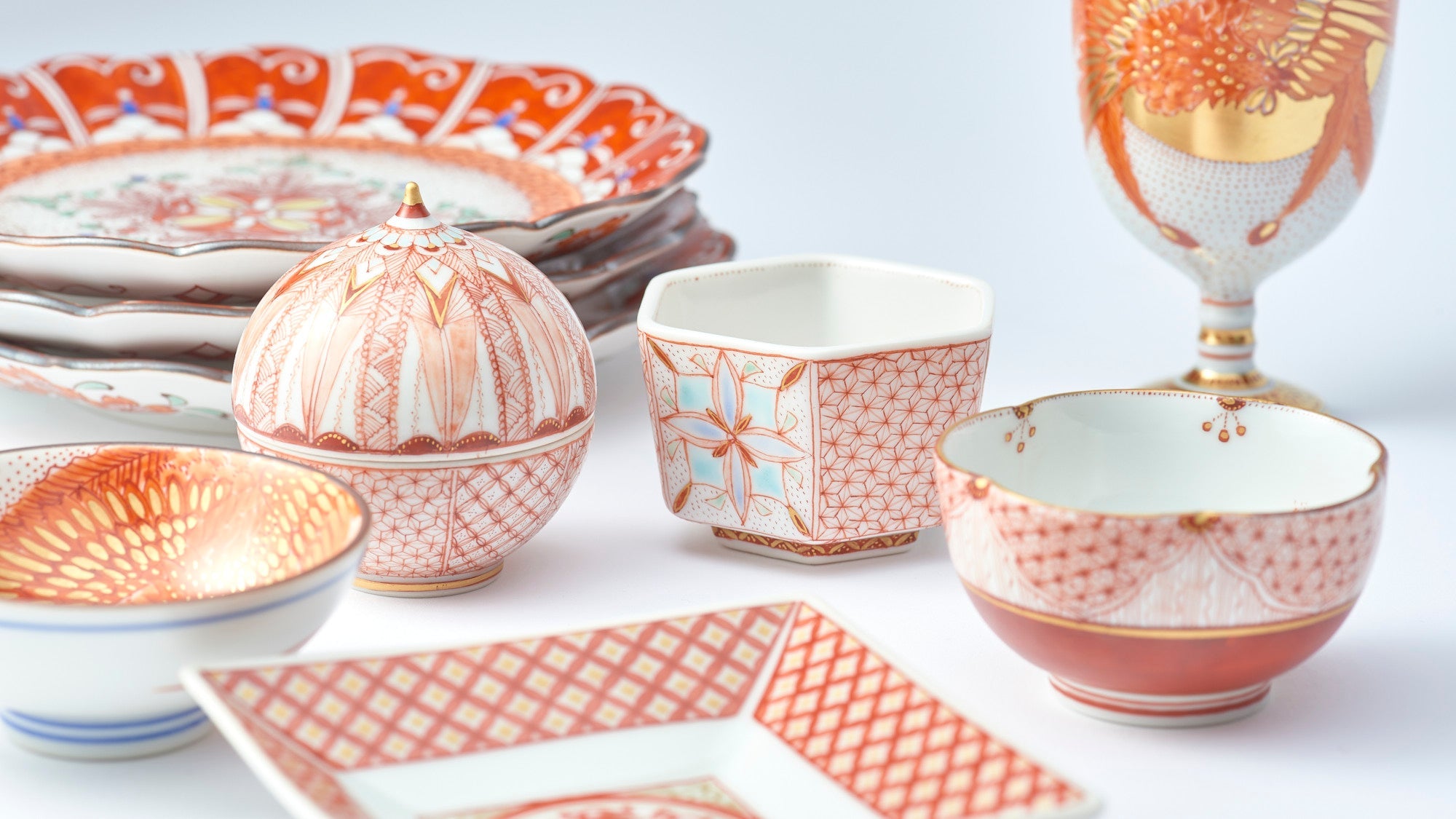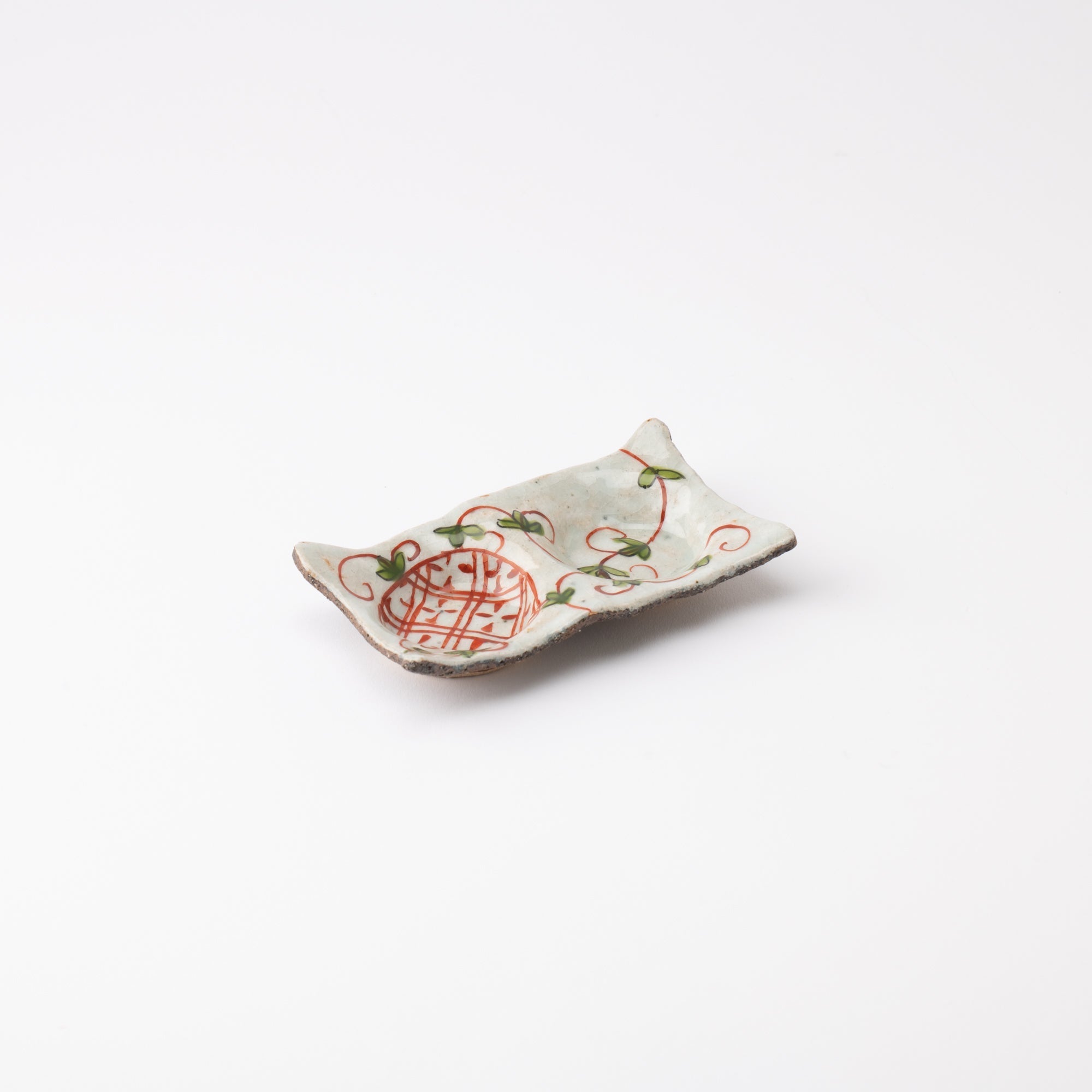
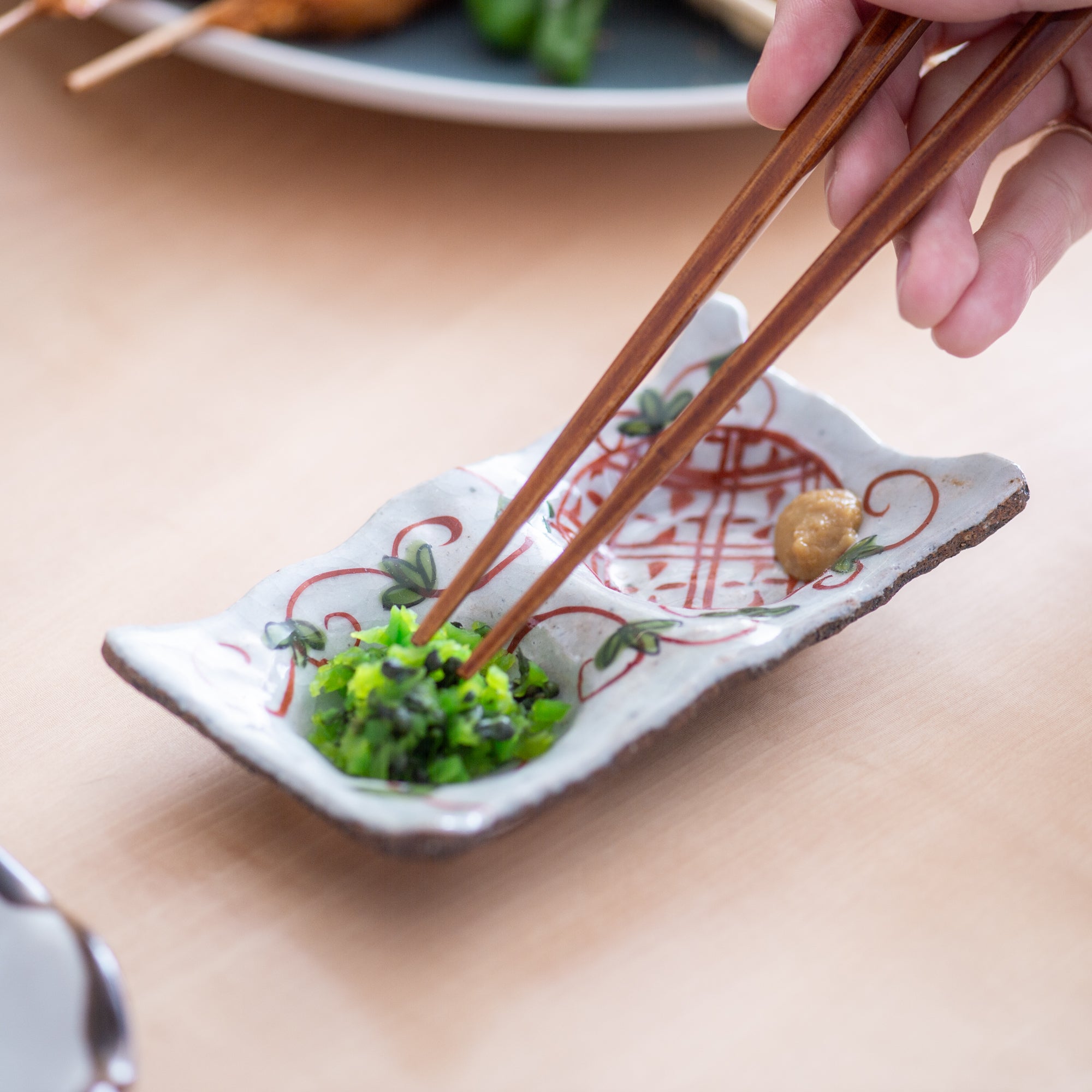
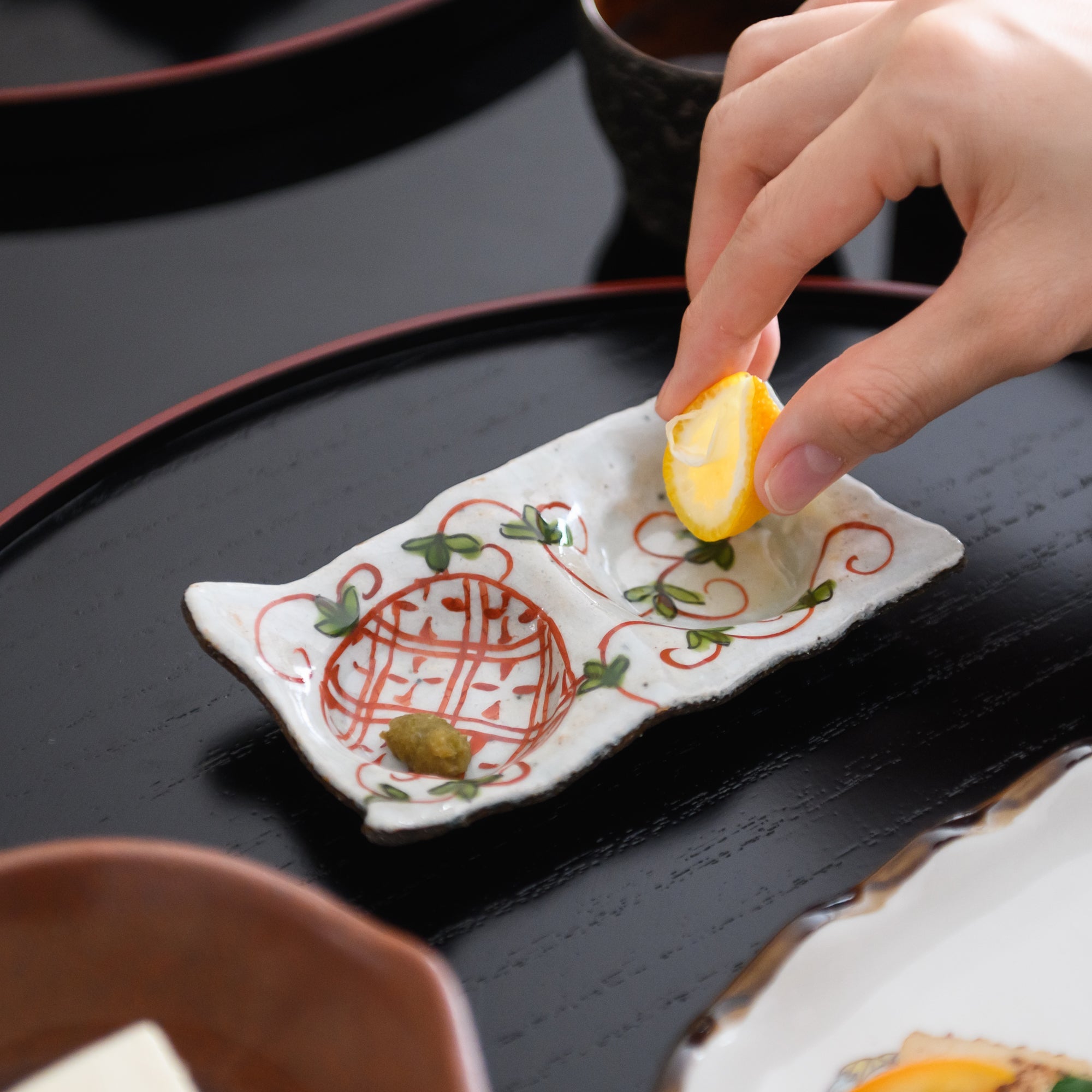
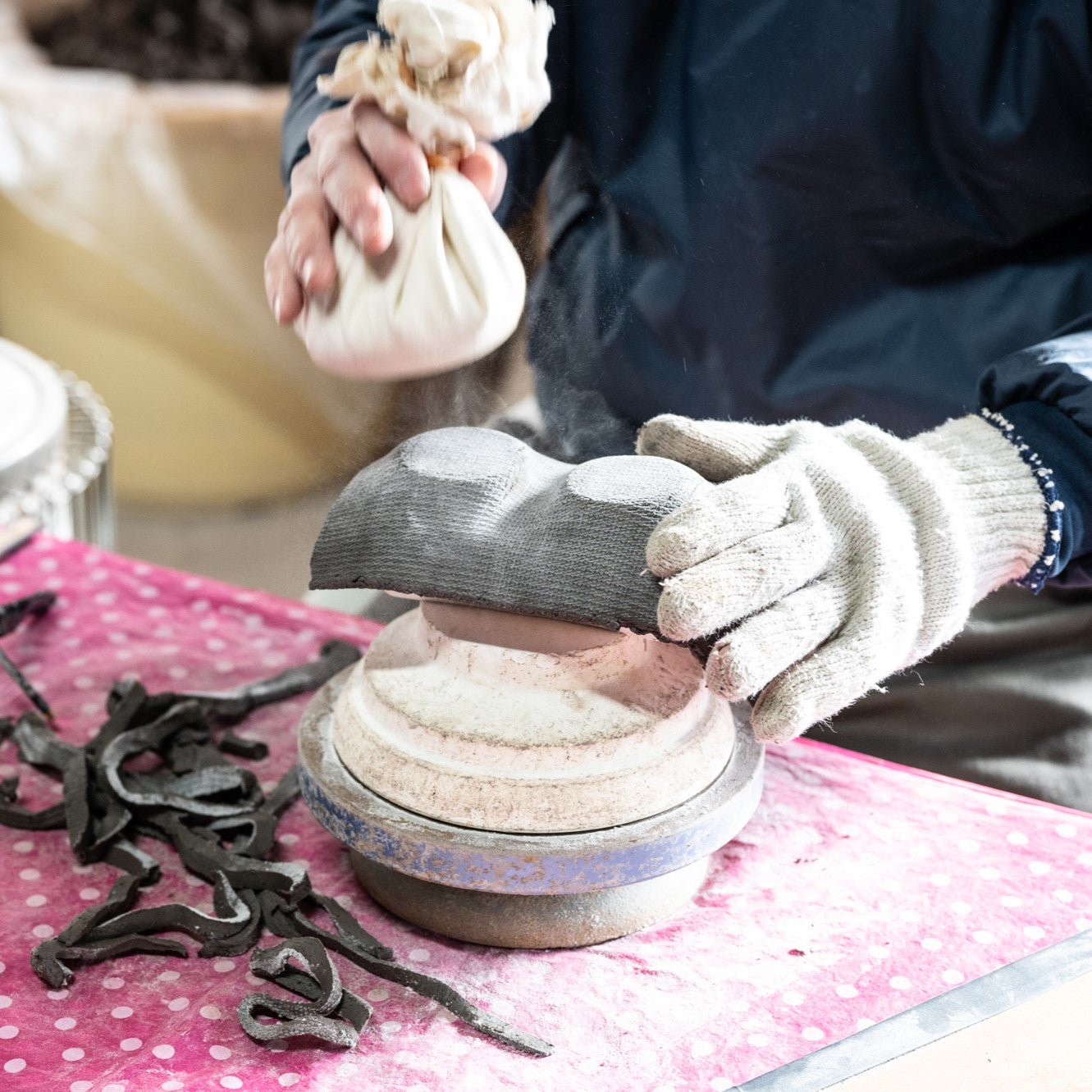
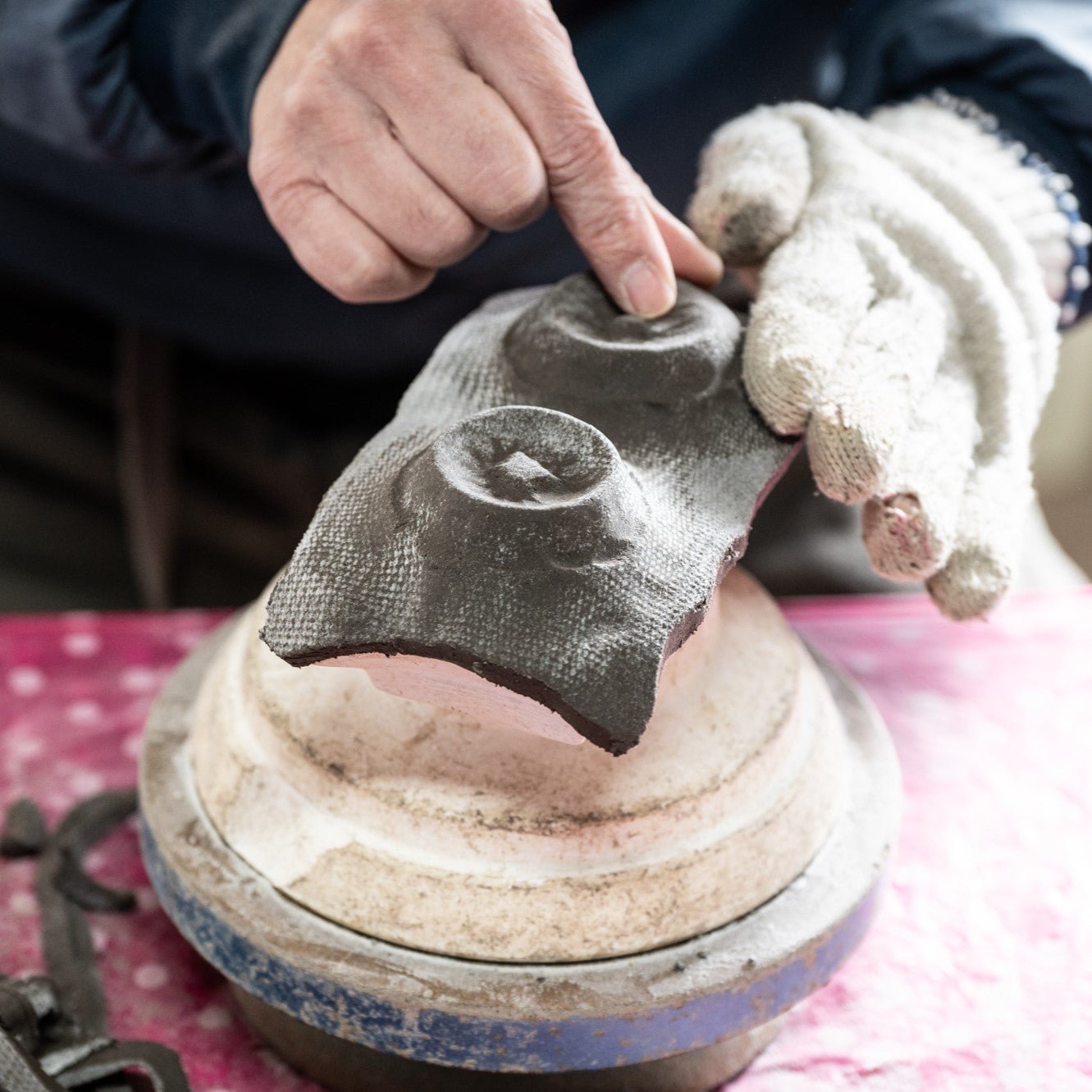
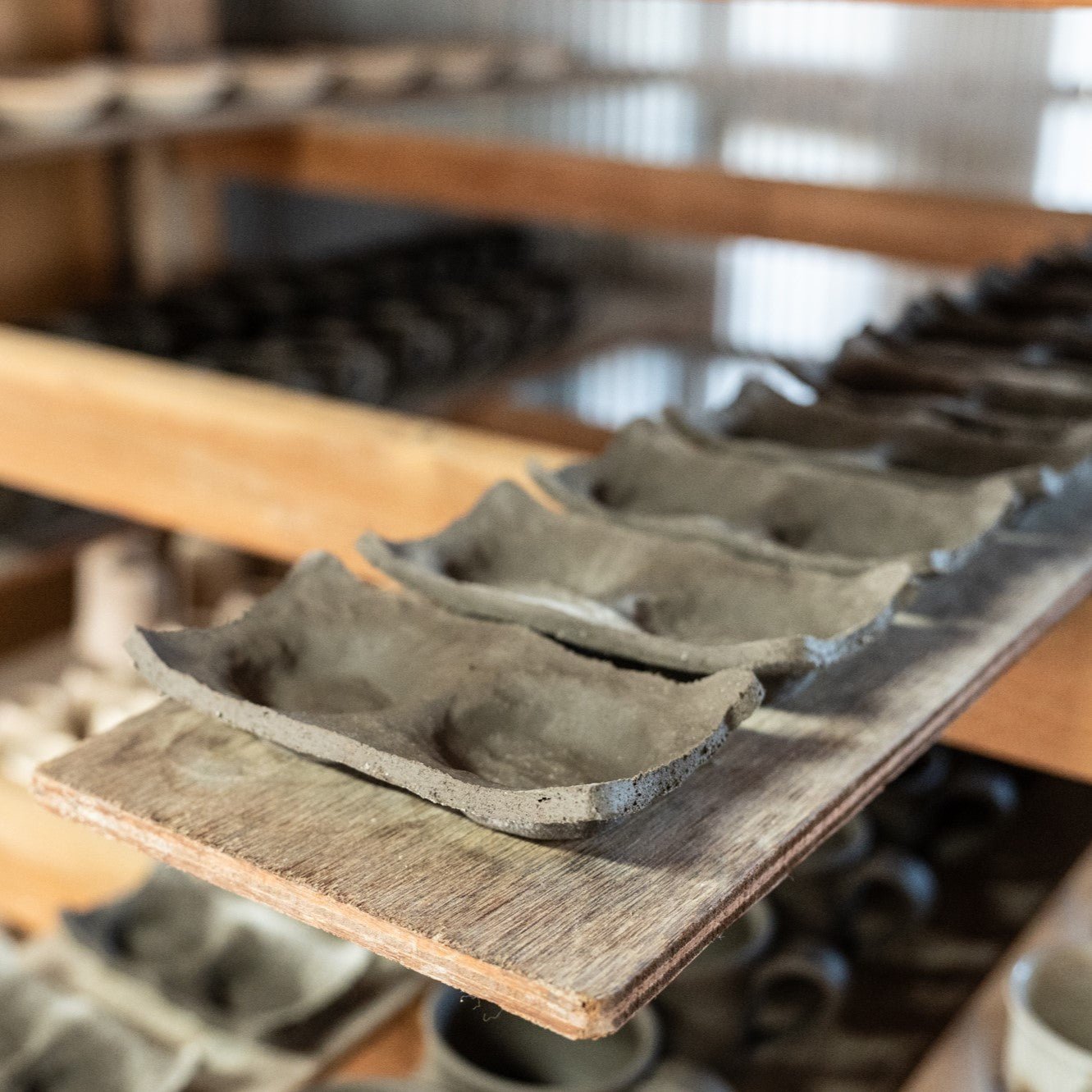
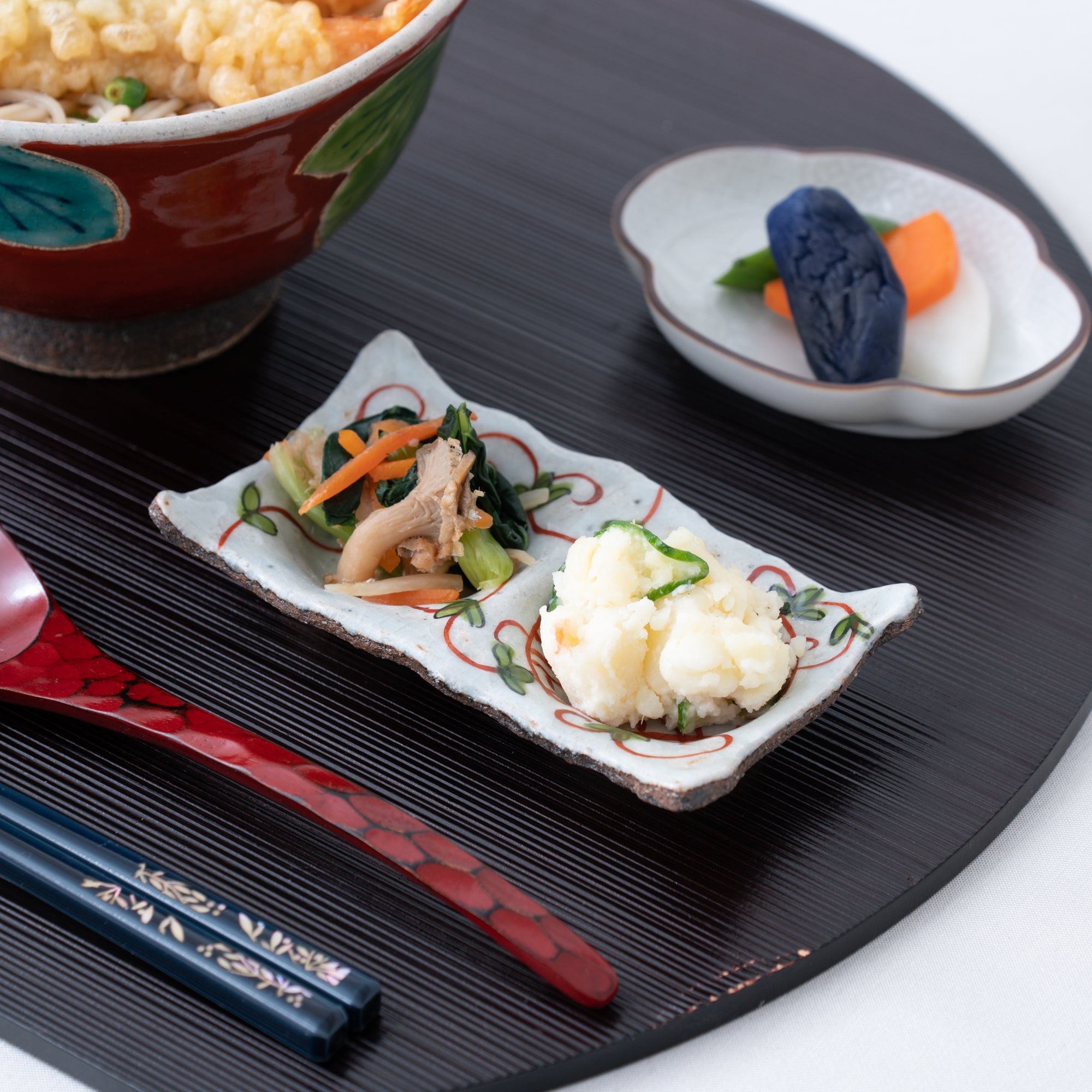
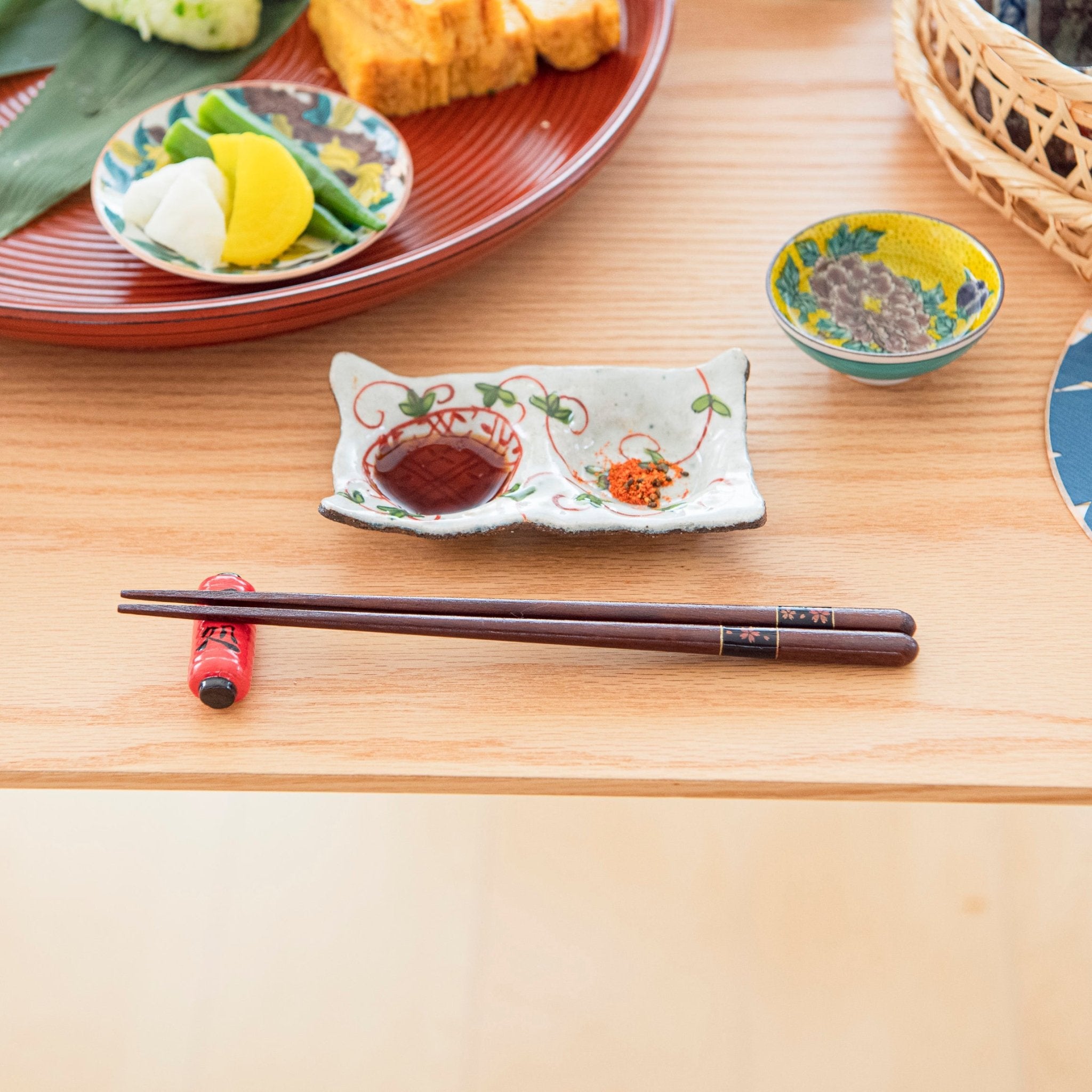
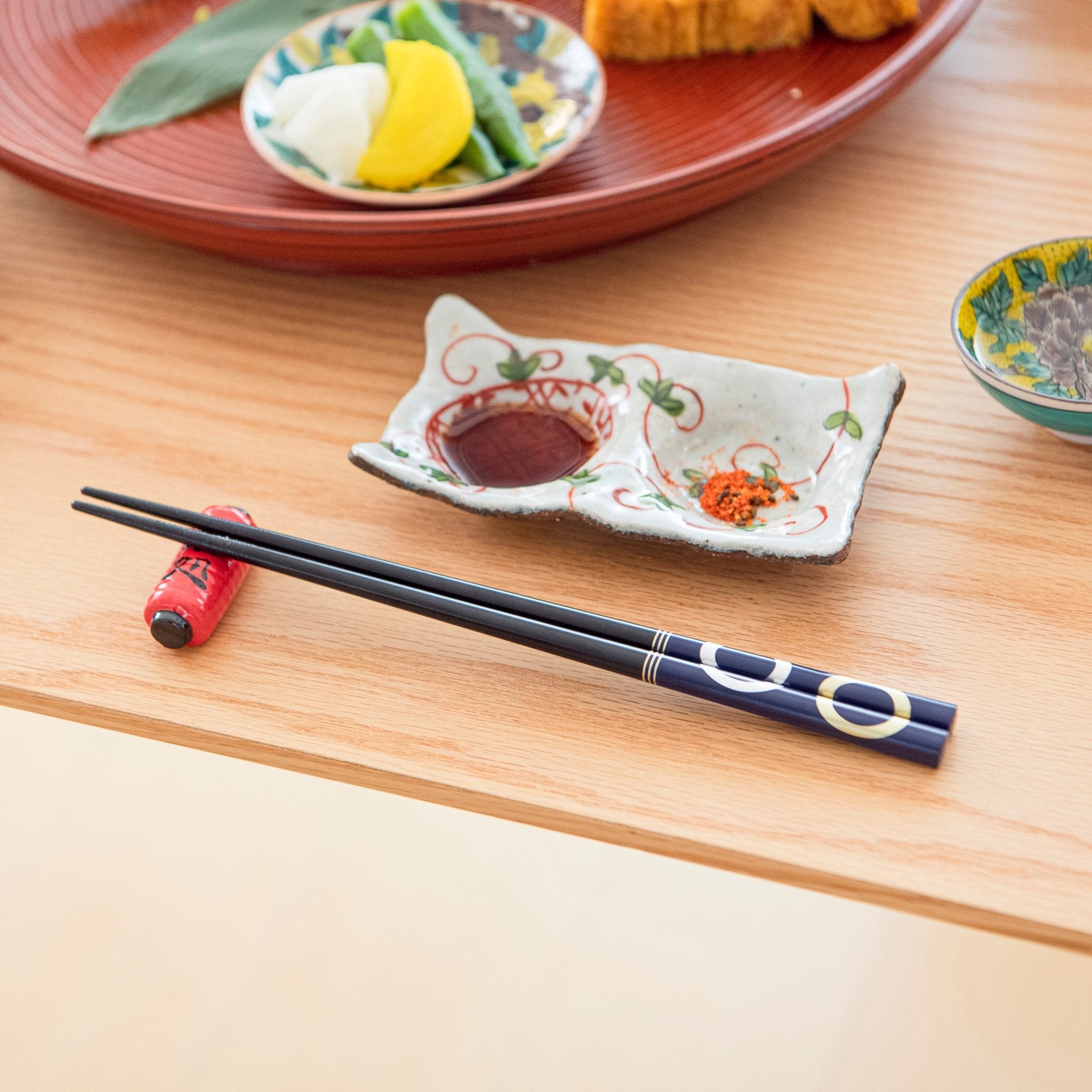
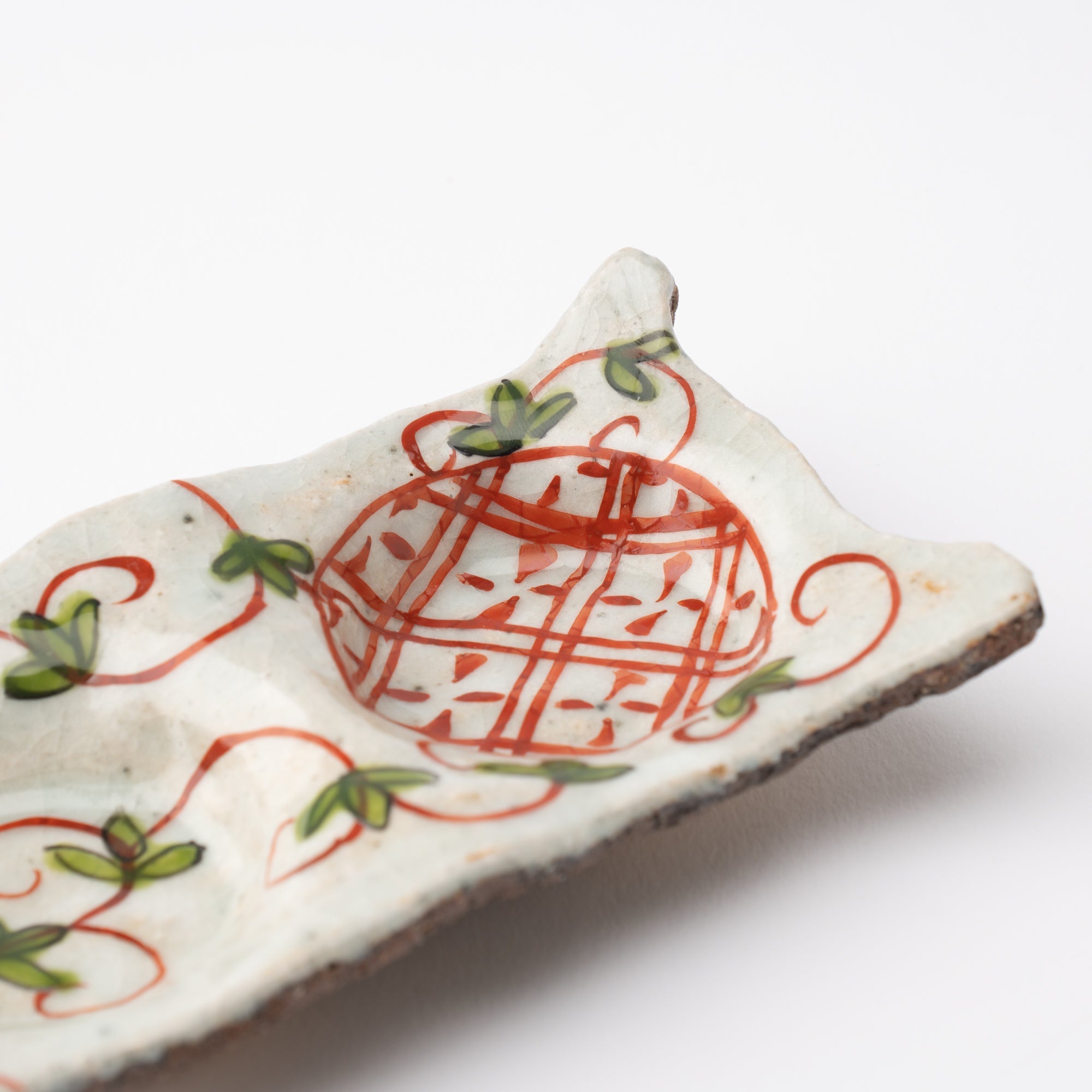
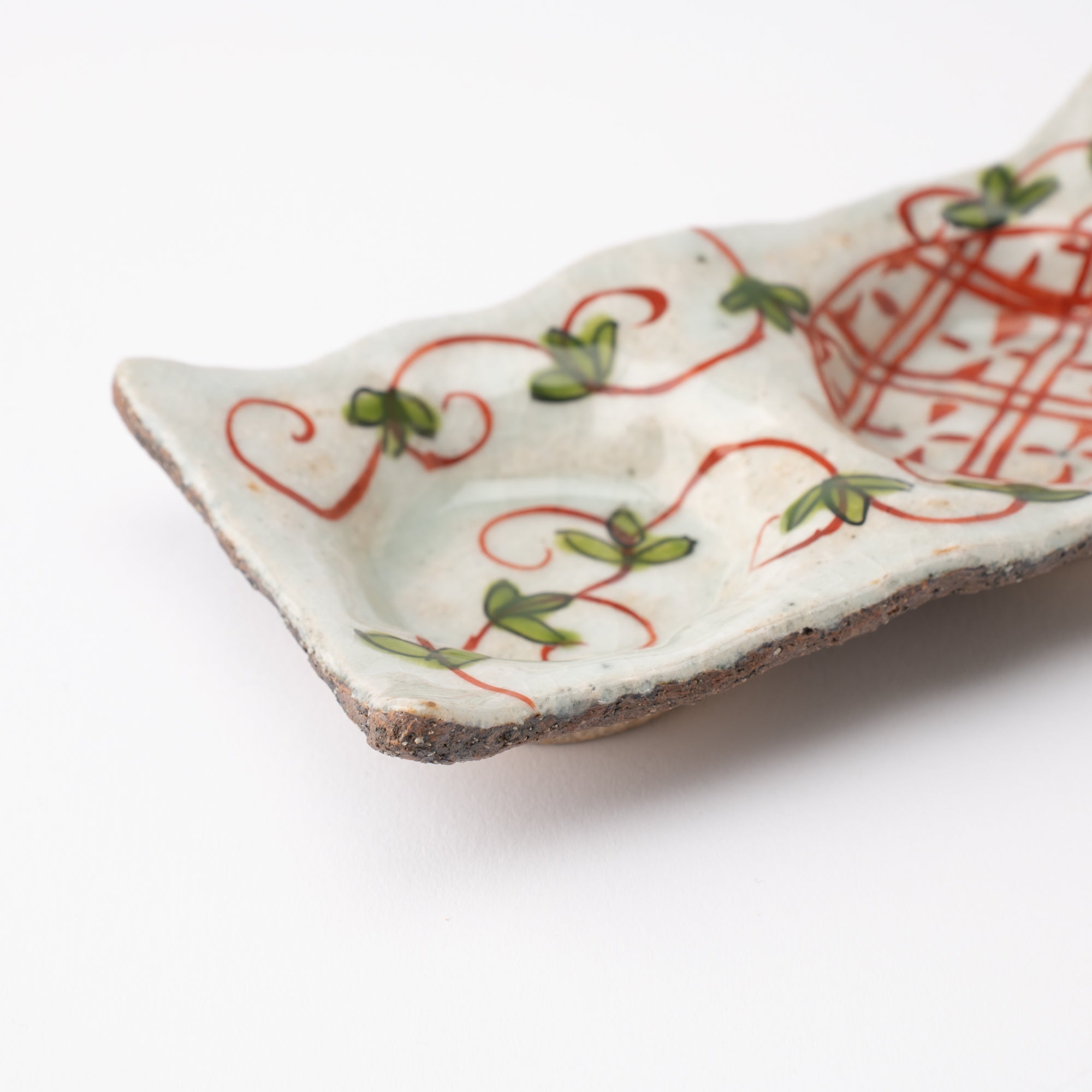
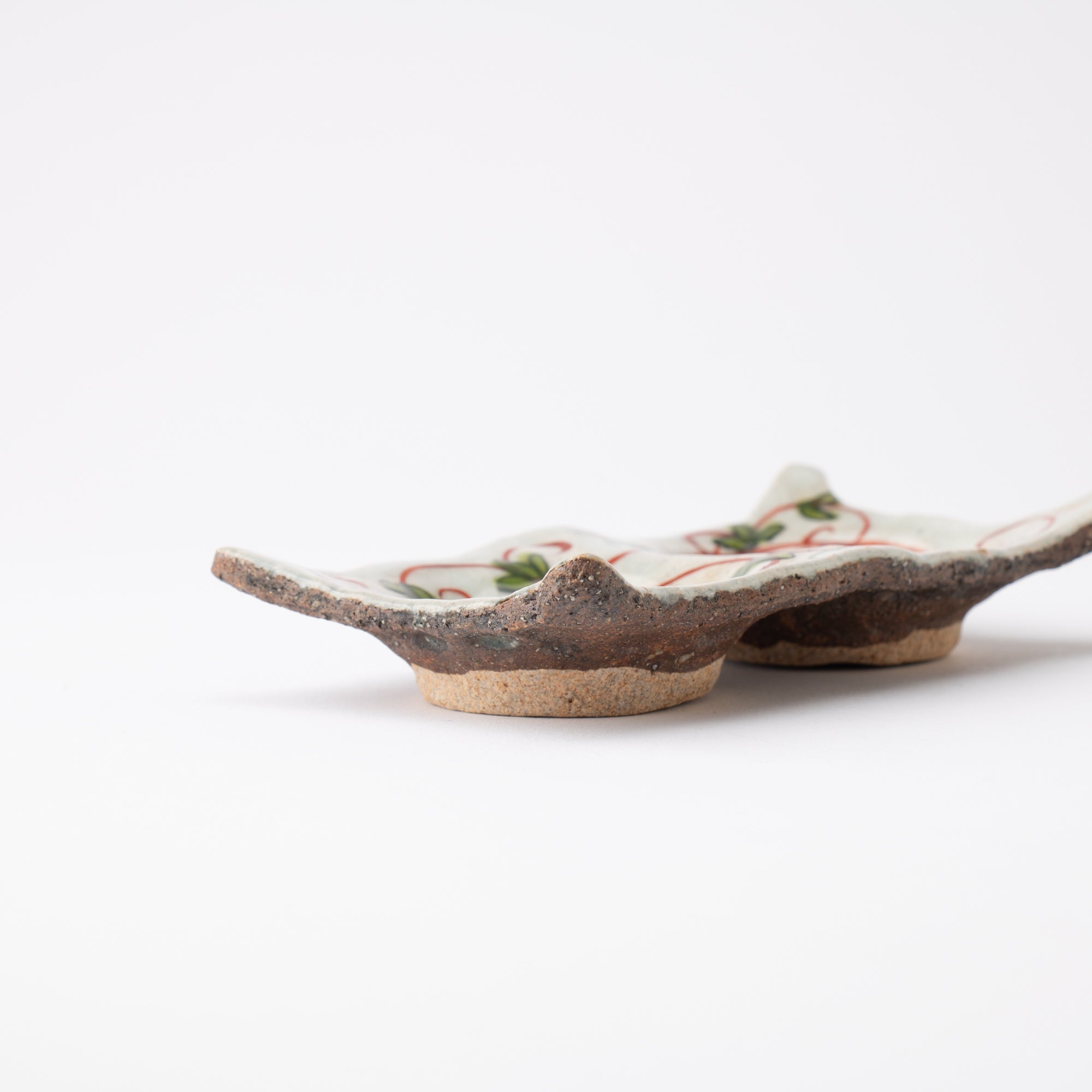
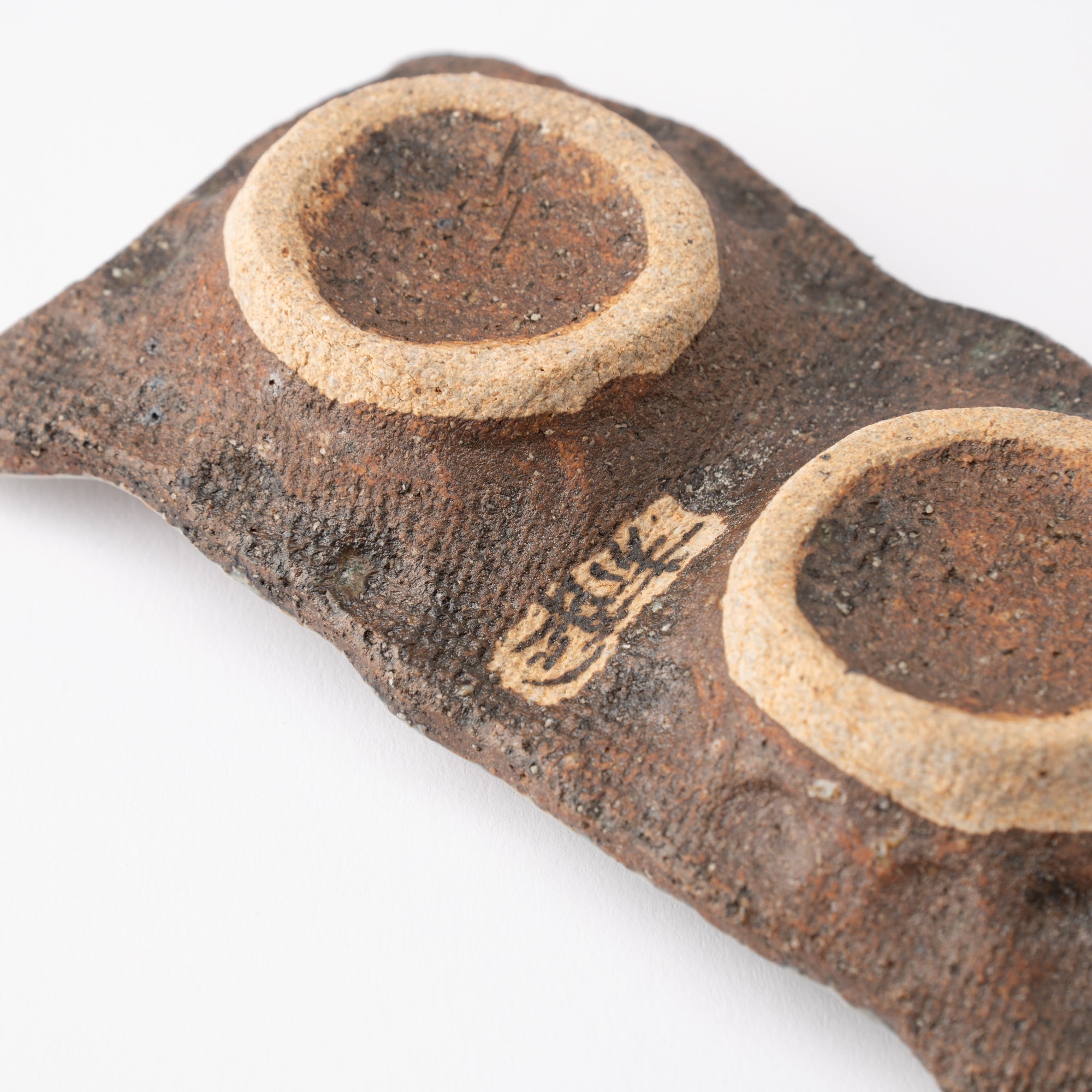
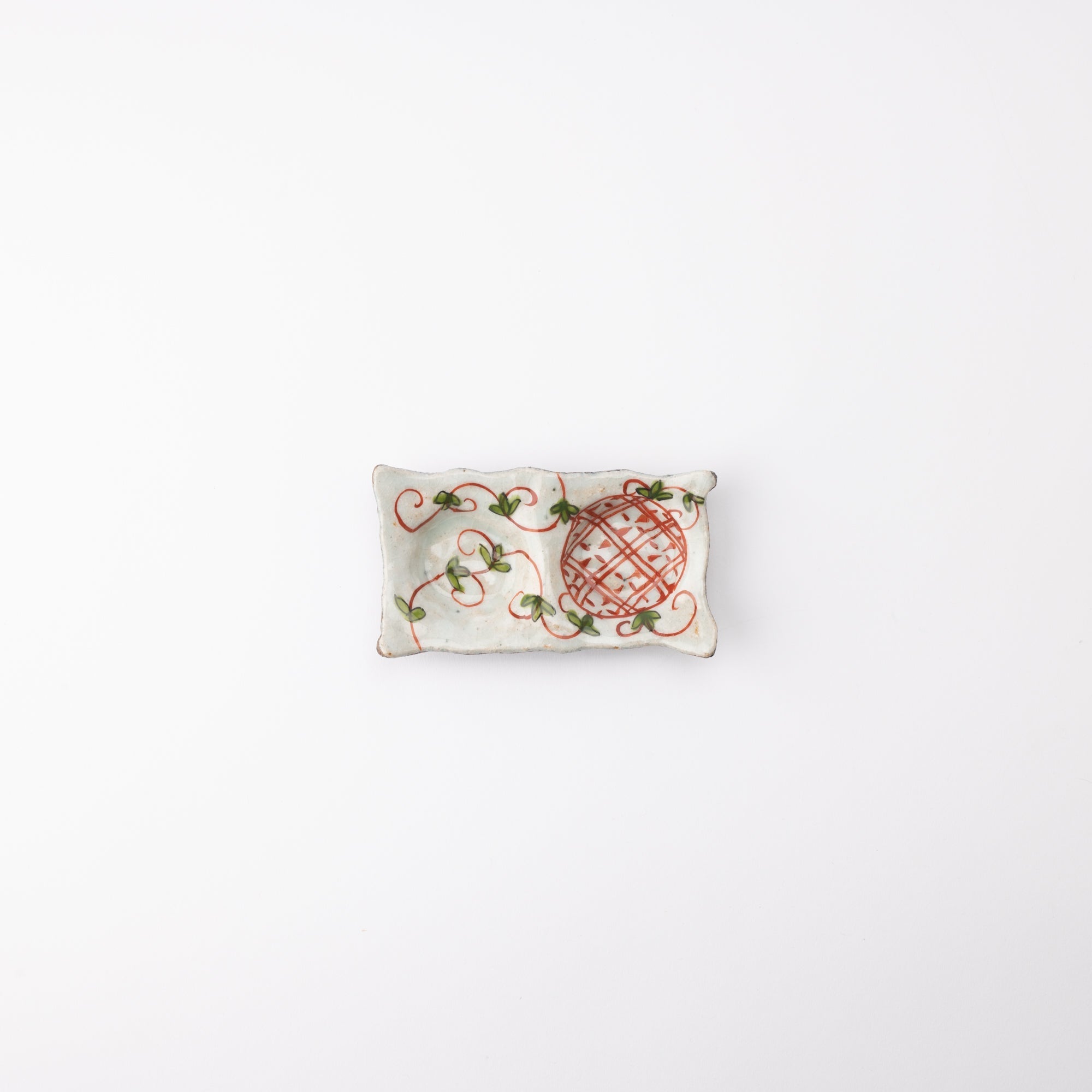
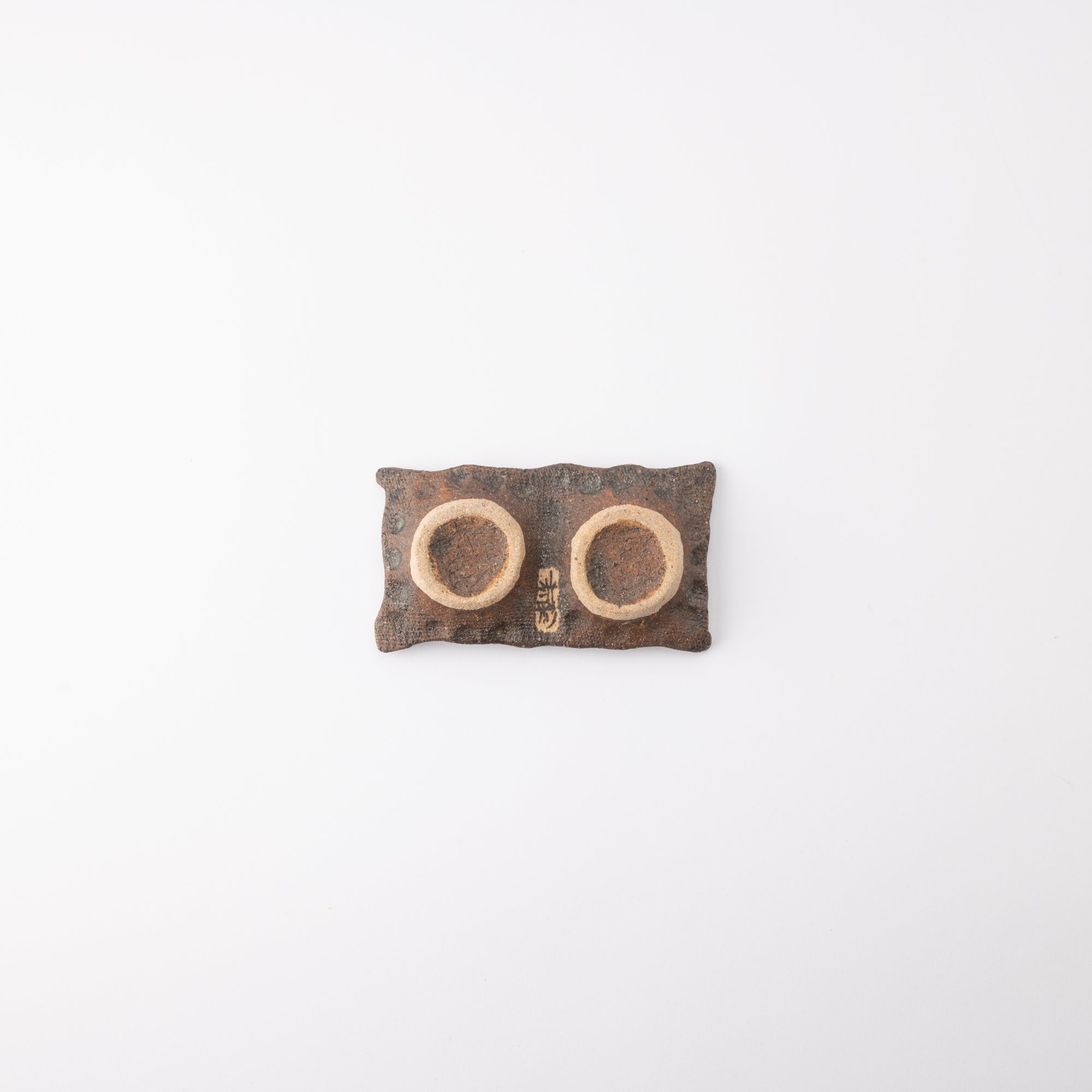
Arabesque Divided Sauce Plate
Estimated Shipping Widget will be displayed here!
This is a sauce plate with arabesque pattern on white glaze. It is an eye-catching piece on the table with a rustic and warm atmosphere that brings out the best of hand-drawn lines and handmade shapes.
There are two places to put sauces and condiments, which is convenient when eating sashimi. It is also deep enough to place pickles, snacks, and small side dishes.
DETAILS
| Quantity | 1 |
| Size | L 13 cm(5.1 in) x W 7.3 cm (2.9 in) x H 3.3 cm (1.3 in) |
| Material | Stoneware |
| Microwave | No |
| Dishwasher | No |
Maker / Brand
Kousai Kiln is owned by Umeno Hirohiko, a potter based in Hasami-cho, Nagasaki Prefecture. He trained at a Kiyomizu ware kiln in Kyoto and opened his own kiln in Mt. Nakao in 1991. He produces unique pottery based on handmade and hand-painted techniques.
Combining Shigaraki-style yakishime, or high-fired unglazed ceramics, and traditional somenishiki painting, his unique style is popular for its fusion of stoneware, which is relatively rare for Hasami ware, and the Kyoto-influenced elegance of Kyo ware. The unique motifs of these ceramics, such as depictions of plants like flowers and grapes and animals like cats and rabbits, make it fun to choose from a wide variety of pieces.
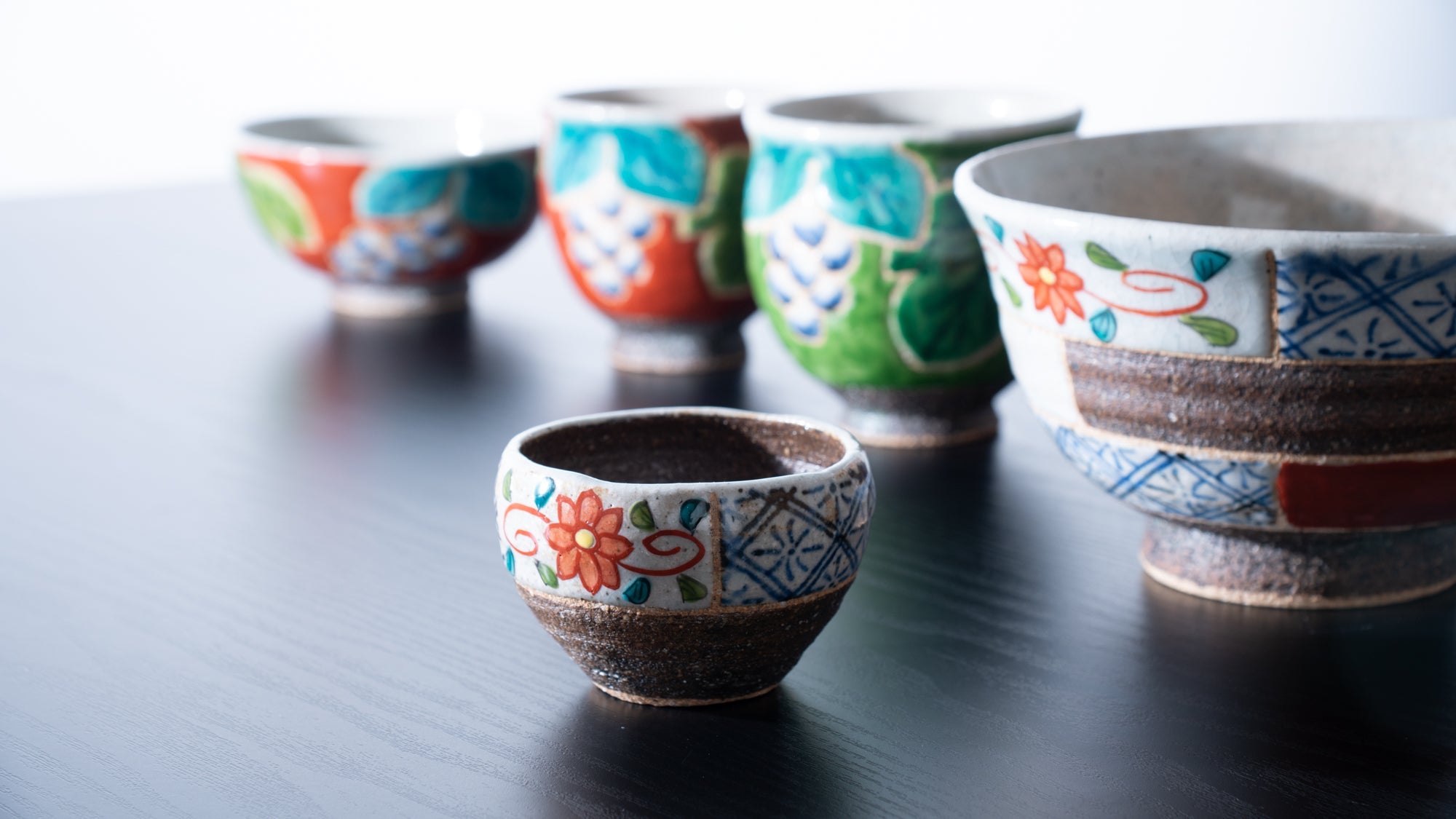
Crafts
Hasami ware is a traditional Japanese ceramic produced in Hasami Town, often called the "Town of Pottery," located in Nagasaki Prefecture, Kyushu. For over 400 years, it has been cherished as durable and practical tableware for everyday use.
It is known for its vibrant designs painted on a pure white porcelain base—an iconic feature of Japanese porcelain. While Hasami ware continues to honor traditional patterns, artisans are constantly creating new designs that suit contemporary lifestyles, blending timeless beauty with modern functionality.
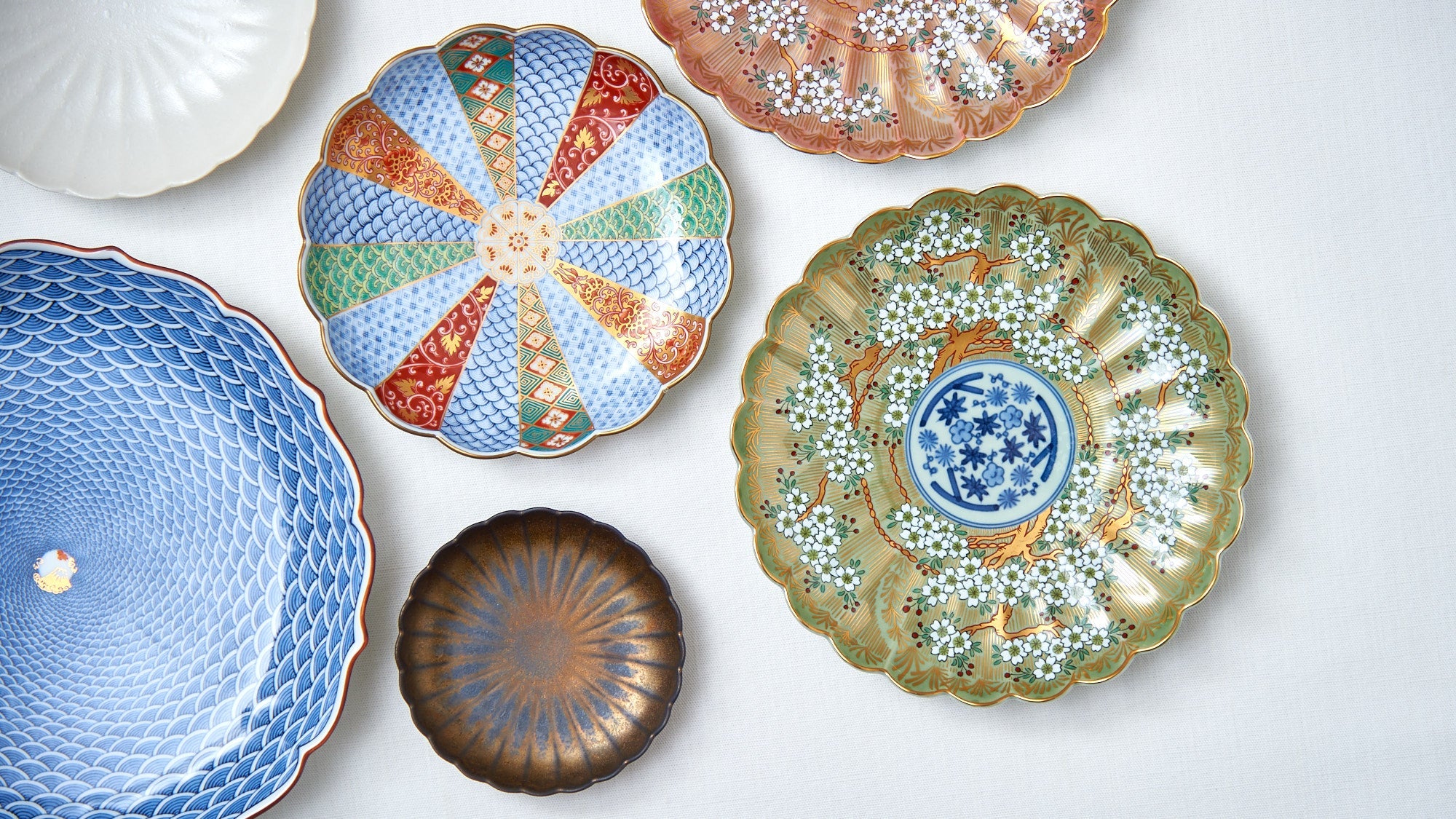
Choose options















Estimated Shipping Widget will be displayed here!
Sauce Plates
Ranging in style from elegant to kawaii, our collection of Japanese sauce plates is perfect for when you need something small yet versatile for your dining table. Conveniently sized for soy sauce and other condiments accompanying sushi or noodles, these dishes are also just right for bite-sized cheese, nuts, and appetizers. A must-have for any meal.
This category includes plates with diameters under 12.9 cm (5.1 in).

Akae
Akae, or red painting, is an overglaze decoration that primarily uses red, complemented by colors such as green, purple and blue. In China, this style originated during the Song Dynasty (960 CE–1279 CE), while in Japan, it was introduced by Sakaida Kakiemon during the Shoho era (1644 CE–1648 CE) and later found its place in Kutani ware.
In Kutani porcelain, akae-saibyo is particularly famous. Akae-saibyo literally means "fine painting in red." Using an extremely fine brush, each line is drawn on the surface of the vessel with exquisite detail, creating breathtakingly intricate patterns.
